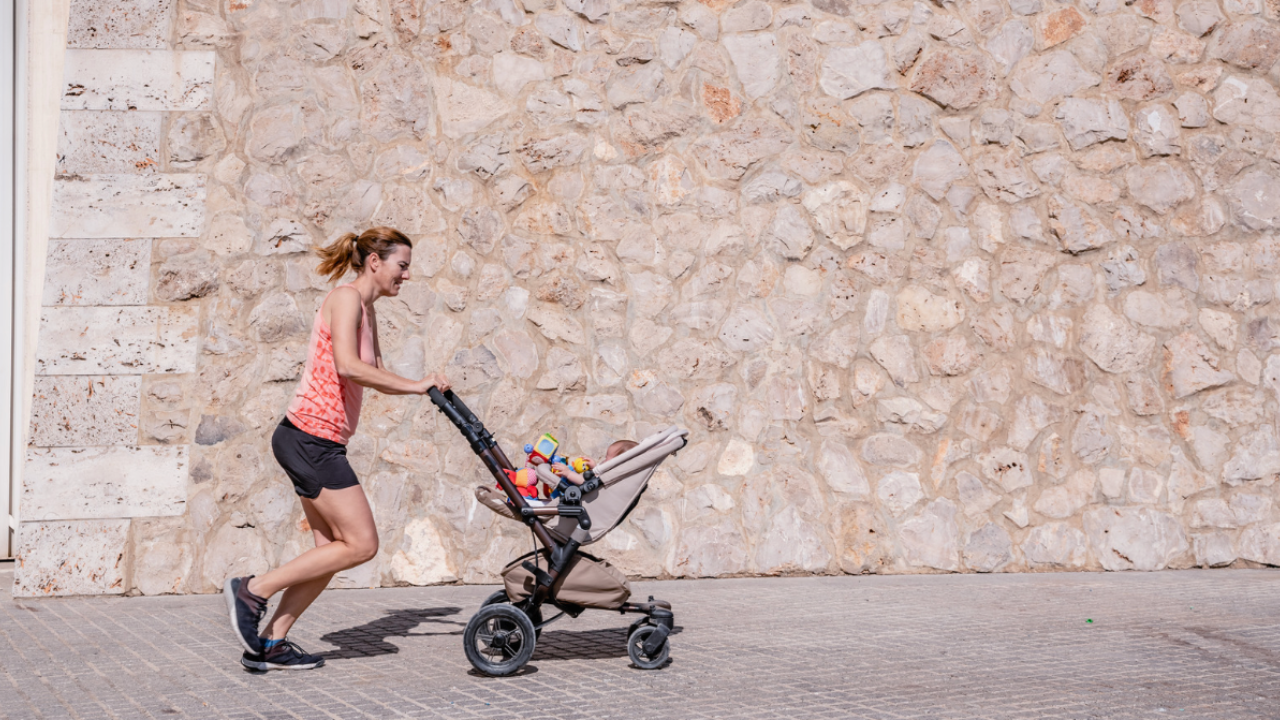Peeing When You Run After Having Kids? Here's What You Can Do!
Oct 03, 2023
For many people who gave birth who enjoy running, the idea of peeing themselves while doing so can be discouraging. There is also a common misconception that once you have kids, you will always have to deal with urinary leakage. Does it occur? Definitely. Can it improve through conservative management? Absolutely. Yes, you will be peeing while running after kids if you do not get things addressed. It is totally treatable and surgery is not the first line of defense recommended by the urogynecologists. They will recommend pelvic floor physical therapy, targeted strengthening exercises and lifestyle modifications. Have you worked alongside a movement specialist postpartum? If the answer is no, I will outline some things to try on your own, or what you can expect when working with a physical therapist.
First, let’s talk about why we are peeing when we are running, and the most likely cause is from stress urinary incontinence. This is the involuntary loss of urine due to too much pressure in our abdomen and core canister. Our core canister is a pressure system that helps stabilize our spine, and transfer forces across muscles and fascia from the ground up our body to create movement such as running, walking, throwing, etc. Pregnancy instigates a massive change in our core canister physically when our front abdominal wall becomes elongated, and our entire pelvis with its musculature adapts to the weight and stretch required for pregnancy and delivery. There is no doubt that after this experience, our core canister does not just snap back to the way it was before. With that being said, no one said we cannot train and accommodate our system to our new normal for our favorite pre-pregnancy activities - like running!
Here are some things to consider to see if you can modify on your own:
- Your breath pattern. You are obviously breathing when you run, but if it is not coordinated or consistent, this can build up pressure in your core canister while running which can lead to leaking. I recommend starting with inhaling for four steps and exhaling for four steps to begin with. The practice will be to maintain this breath pattern for the duration of your run and notice if that helps.
- Lean Forward. The more upright or backward leaning you are while running, the more pressure will be enacted through the front abdominal wall and down the anterior party of the pelvic floor, aka leaking. Think “nose over toes” while running, but also keep your shoulders and pelvis in a straight, slanted line all the way down to your ankles.
- Note when you leak. Is it at the beginning of your run or at the end? Is it when it is uphill or downhill? Is it at a particular cadence? Once you think you’ve narrowed down a pattern, use one of the strategies above to see if you hone in on that mechanism during the most vulnerable part of your run.
What you can expect when working with a physical therapist here at Athletes’ Potential:
- Running analysis. We will take a look at your running form and film it. The purpose behind that is to rewatch and slow down each phase and identify areas of improvement mechanically or technique wise. Running is all about having good mechanics for as long as you can. Our pressure issues can be a symptom of a mobility or coordination issue that we can improve on.
- Physical Evaluation. This will point out areas to improve that may be imbalance between your strength, mobility, coordination of your muscles throughout a series of screens. This can help identify where or why pressure is affecting your pelvis. We will be able to tell to a degree if you are someone holding too much tension in and around your pelvis/back versus someone who isn’t. There needs to be a balance which can also affect your core canister and pelvic floor.
- In-depth understanding of your training goals. We will ask you what you are training for. Is it for an upcoming race, a birthday goal, or simply to be able to run alongside your kids as they grow up? We want to know your why and will lovingly hold your feet to the fire.
- A specific training plan for you. As experts between the fields of rehabilitation and performance, we will construct a training plan and specific drills that will mitigate leaking and improve your running performance. No more compiling data from Instagram and YouTube.
No matter how severe your leaking is, it is not normal for that to occur. It is very common and about 25% of people who have never had children experience leaking while running. It comes back to the things mentioned above like biomechanics, breath coordination, and technique. We are equipped to help you overcome this challenge and will be with you every step of the way!
In health,
Dr. Krystal PT, DPT, CMTPT, RYT-200
Let us help you figure out to live your best active life today!
Remember, Movement is Medicine!

